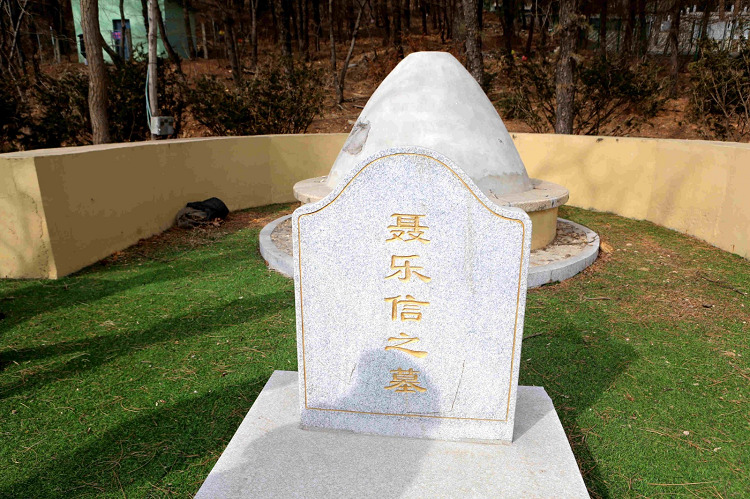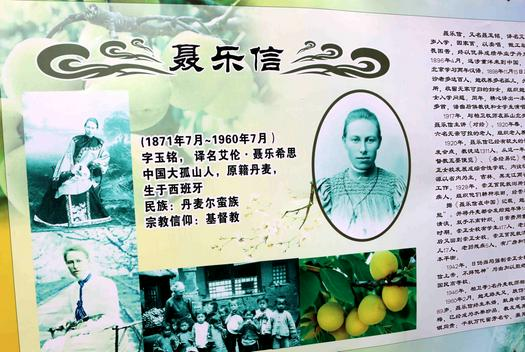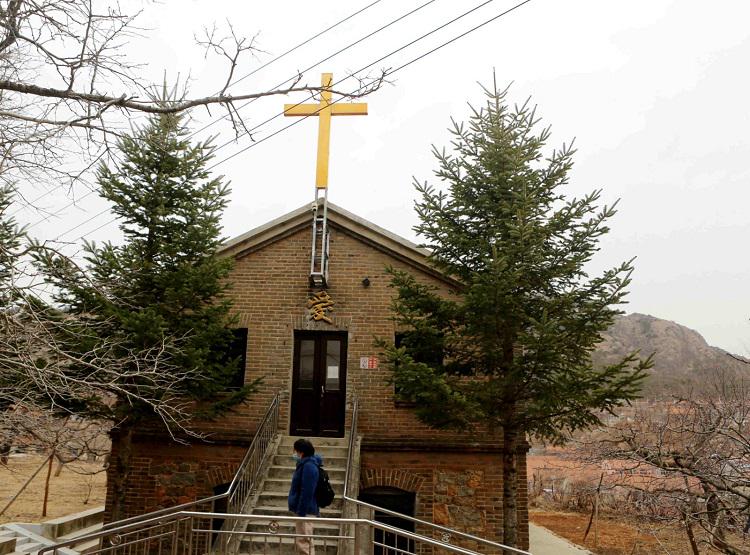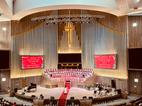Nie Lexin (Nielsen Ellen, 1871–1961), at the age of 28, was sent to China by the Danish Lutheran Church as one of the first group of female missionaries.
Much information on the Internet indicates that she is Danish. However, according to the Religious Chronicles of Liaoning Provincial Chronicles, edited by the Liaoning Provincial Local Chronicles Compilation Committee Office, she was a "Hispanic Chinese." Ellen was born in Baynica, Spain, and her family moved back to Denmark thereafter. She was a graduate of the Danish Nursing Academy. In 1897, she came to Gushan, Dandong, where she was substantially devoted to missionary work and charity. Ellen later became a Chinese citizen. She was a respected pioneer and influential figure in Christianity in Liaoning.
In 1929, Ellen decided to renounce her Danish nationality. She officially obtained her Chinese citizenship in 1931, and her registered name was "Nie Lexin." The name is probably related to the motto of the Danish Lutheran Church, which is the teaching of the Lord Jesus Christ in Mark 5:36, “Bu yao pa, zhi yao xin.” (which means "Don't be afraid, just believe.") She was born into poverty and had deep sympathy for the poor. She raised funds from Denmark to buy land, merged and expanded several institutions, and founded Chongzheng Girls' School (Nielsen's Family Village). It housed hundreds of children from poor families in northeast China and North Korea.
In 1921, she founded the Chongzheng Poverty Relief Center, where men were organized to work in farm fields and in construction. There were a silk weaving department and a women's public welfare department in place to teach women about hand embroidery, making daily necessities, doing housework, and babysitting. She paid these workers accordingly and provided support for people with disabilities. Her ministry provided employment opportunities for many local people and evangelized to them. By 1938, the Relief Center owned 5,860 hectares of arable land and had adopted 370 people. She has no biological children but many "spiritual ones.”
Ellen was one of the early missionaries of the Danish Lutheran Church in Northeast China in modern times. She practiced medicine, established schools, and helped orphans as well as children. While introducing Christianity to Northeast China, she also brought western scientific and cultural knowledge to the local communities.
Chongzheng Girls' School, founded by Nielsen Ellen, started with kindergarten, elementary school, middle school, and teacher training classes. Ellen's sacrifice was rare. She gave the school her annual living expenses of 1,400 yuan from the Danish Lutheran Church as operating expenses. She edited Selected Hymns for the Girls’ School. The hymnal collected more than 200 hymns from Europe and the United States on the theme of the Bible. Based on Martin Luther's Small and Large Catechisms, she wrote a short catechism and a guide on the five essentials of Christianity. From 1920 to 1925, she published two volumes of Easy to Remember the Bible. (transliteration of Shengjing Yijing.) She became one of the most well-known and well-rounded missionaries of the early stage who carried out missionary activities in Northeast China in the modern era.
In 1927, Wu Boxiang, a believer in the Christian Lutheran Church in Harbin, declared that he would start a church run by the Chinese, separated from the Danish Mission. Most of the churches in northeast China at that time belonged to the Danish Mission. He then established the Chinese Christian Church. Although Nie Lexin did not give supporting remarks publicly, she was in favor of the marriage of Wu and Jiang Baozhen, the principal of Chongzheng Girls' School, who had studied in Denmark and the United Kingdom and was a famous early childhood educator at the time.
Ellen became a Chinese citizen in 1929. A gentleman from Gushan in Dandong presented her with a golden horizontal plaque engraved with "outstanding locally and overseas" to congratulate her on becoming Chinese. She often practiced medicine for women. There were sometimes as many as one hundred patients a day.
After World War II, most of the Danish Lutheran missionaries sent to China returned to their home countries with one another. Nie Lexin considered herself Chinese and never left China. In 1947, Dandong was undergoing land reform. Nie Lexin was classified as a "landlord" because she had plenty of land in Gushan, including real estate such as schools and churches. They still exist today. Because of her background status, she suffered from the movement of "knocking down local tyrants and dividing their property." Her property was divided. The two Danish female missionaries who stayed behind to help her, Bu Siwen and Chen Leshi, were detained. They hurried back to their home country soon after they were released. Ellen had been all alone with nothing ever since. In 1949, the new government implemented the religious policy and returned to her a church and an orchard (which today is the Christian activity site, the Gushan Town Church, in Gushan, Dandong), a pond, and four cows. According to the Religious Chronicles of Liaoning Provincial Chronicles, the people's government arranged for her life in her later years.
In February 1960, at an old age, she fell while walking on a mountain road and broke her arm. She was confined to bed by old age and deteriorating health. She passed away in July of the same year at age 89. She was buried under the beautiful Dagu Mountain and remained unmarried all her life. Believers commemorate her through poems, "Her legacy coexists with the mountains; her work is as valuable as gold and silver; her name will remain known to the generations after; her spirit is alive even though she is gone.” Many people in Gushan today, believers and non-believers, young and old, have never stopped appreciating the legacy she created for Gushan, such as the Gushan apricot and the school. She continues to be honored as Missionary Nie Lexin.
On Sunday afternoon, March 12, 2023, six of us visited the cemetery of the missionary in Dagushan National Forest Park. Besides myself, the visitors included Senior Pastor Zhang Xing, the former chairman of the Dandong Christian Three-Self Patriotic Movement Committee, his wife, Pastor Zhang Liming, head of Yuanbaoshan Church, as well as Sister Sun Xuehui and Brother Li, the leaders of the Christian Church in Gushan. We had the privilege of being the first non-local Christians to visit the cemetery.
Today, the cemetery has an empty tomb. The original tomb was destroyed during times of turmoil, and nothing remained. Local historical researchers indicated that the current cemetery was built on its original site. A stone monument was erected to commemorate her.
Her cemetery is surrounded by low walls painted light yellow. There is an opening for entry and exit in the southward direction. This is a white, raised, and flat-topped tomb. It is neither a common European nor a Christian tomb style. It is different from the pointed mound tombs in northern China. It is featured with the conical and flat tops of the general public’s tombs in the Ming Dynasty. To the east of the tomb is a small stone tablet. Its front is engraved with "Tomb of Nielsen Ellen" in gilt official script. An inscription about her evangelical ministry and charity is on its back.
(The author is a special writer for the Gospel Times in Dandong City, Liaoning Province.)
- Translated by June I. Chen














